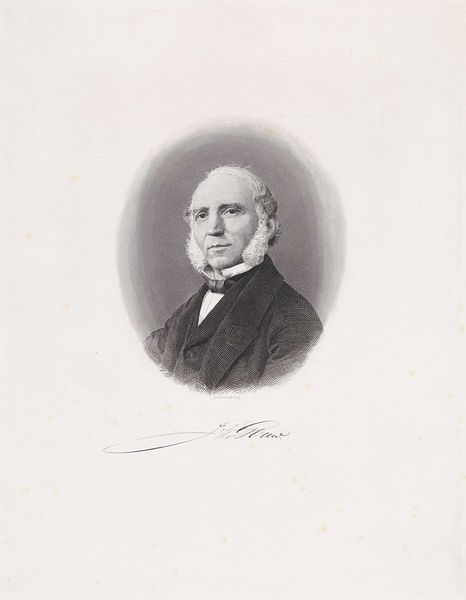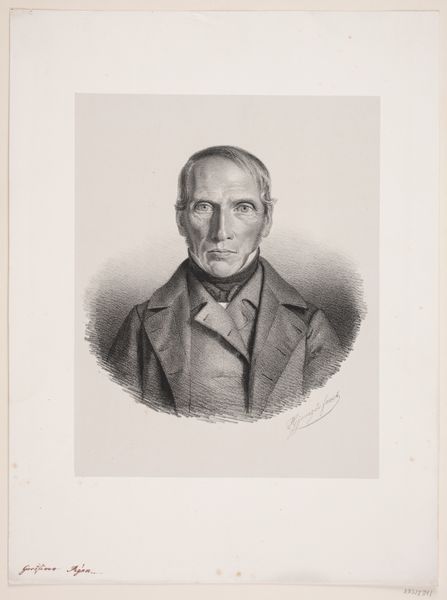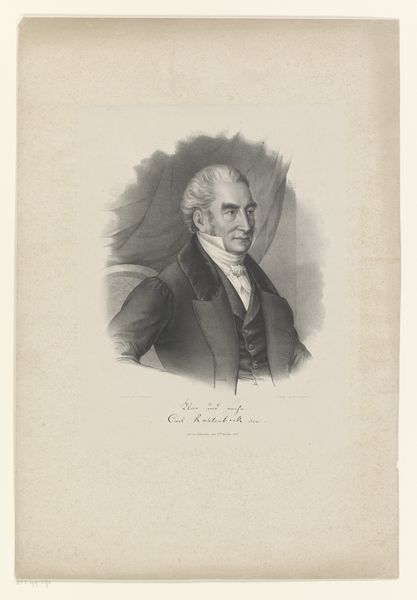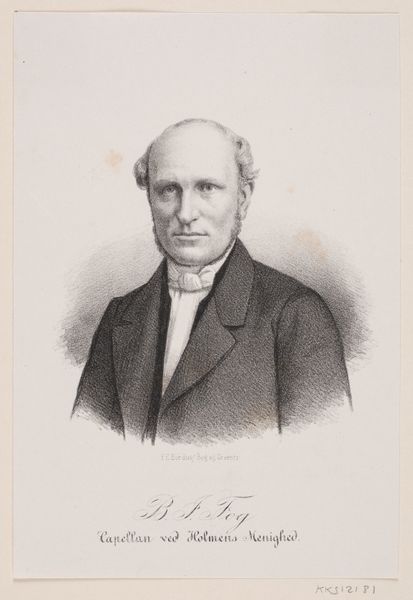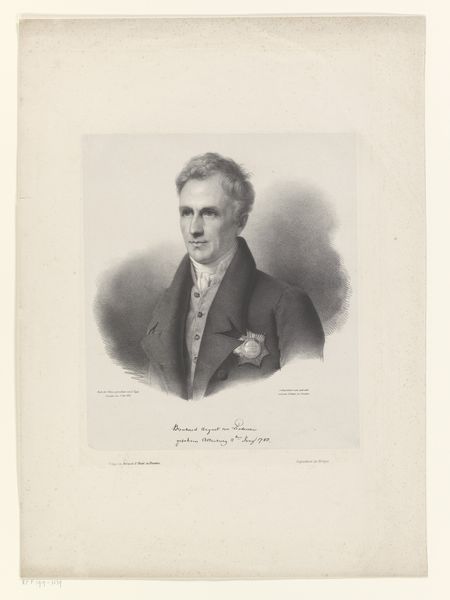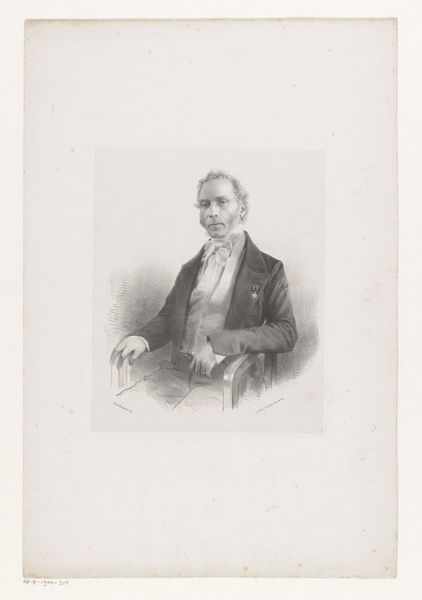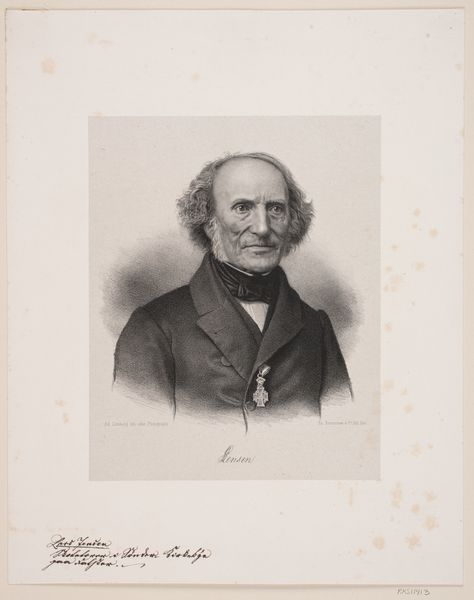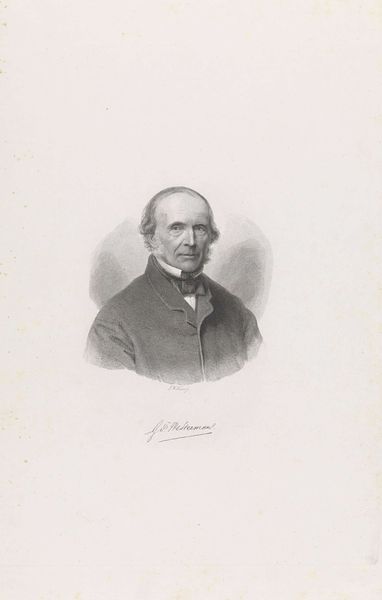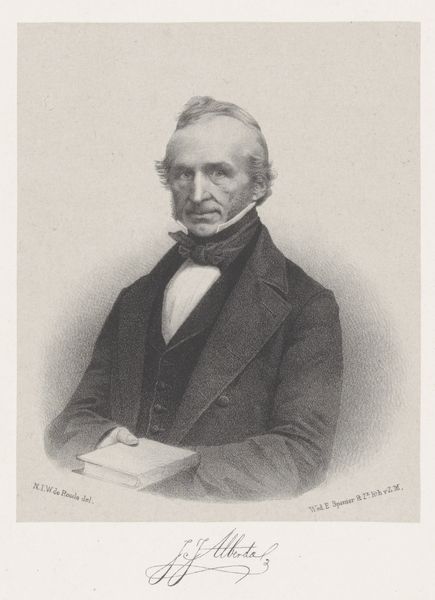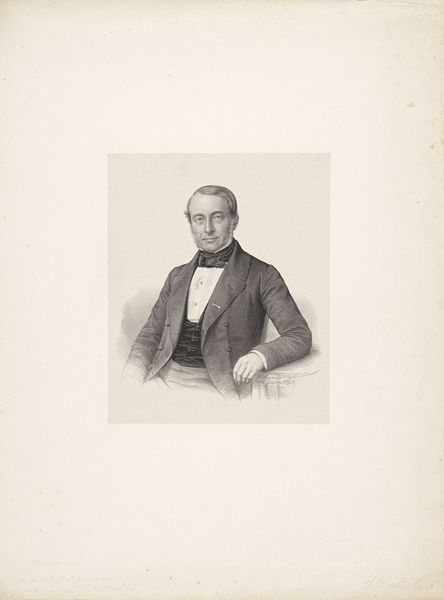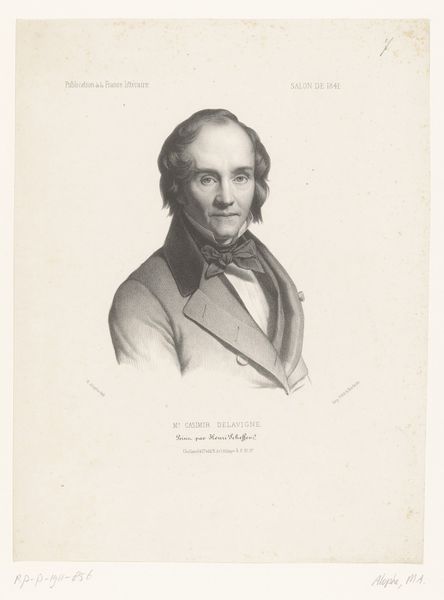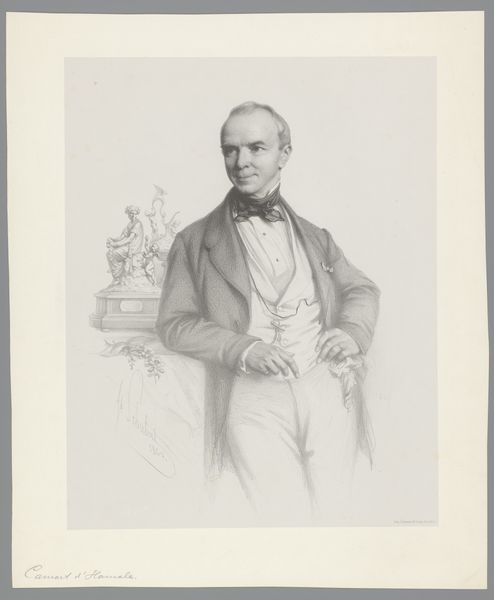
lithograph, print
#
portrait
#
16_19th-century
#
lithograph
# print
#
realism
Dimensions: 398 mm (height) x 282 mm (width) (bladmaal)
Curator: Welcome. Here we have a lithograph simply titled, "J. F. Jacobsen," dating roughly from 1820 to 1843. It is currently held at the SMK, Statens Museum for Kunst. What are your initial thoughts? Editor: Stark. I'm struck by the contrasts. There is the stark white paper and the almost harsh hatching and stippling used to render the man's face and clothing. The arms crossed give an air of sternness. Curator: Indeed. The lithograph medium allowed for the relatively quick and inexpensive reproduction of images. Prints like these became vital tools in shaping public perception, spreading ideals of class and professionalism in emerging civic societies. Jacobsen, we know, was a harbor supervisor. Editor: Right, and a lithograph—you’ve got the directness of drawing combined with reproducibility. That immediately puts it in the sphere of wider accessibility, unlike, say, a unique painted portrait commissioned only by the sitter. Think of the transfer of the image onto the lithographic stone, then multiplied through many pulls, made this likeness more available to many eyes. Curator: Precisely! These images contributed to constructing Jacobsen’s public identity as an official, not merely through the pose he strikes, but in its deliberate mass availability and dissemination through printed media of the time. Look how realism reinforces the social idea. Editor: What I find interesting is the way the artist uses the printmaking process. Look at how the ink sits slightly raised on the page; that’s such a crucial, tactile part of experiencing a lithograph, the material reality of its creation. It's easy to overlook the labor involved in making and circulating such images, focusing more on the face itself. Curator: That's a fair point. One sees how a print such as this gains traction and meaning beyond merely the likeness presented; but it contributes also to a network of reproduced imagery vital for disseminating specific social roles. Thank you for your observations. Editor: My pleasure! Thinking about the materials and techniques opens up how it exists as an object, not just an image—shifting ideas about what portraiture could achieve during its time.
Comments
No comments
Be the first to comment and join the conversation on the ultimate creative platform.
